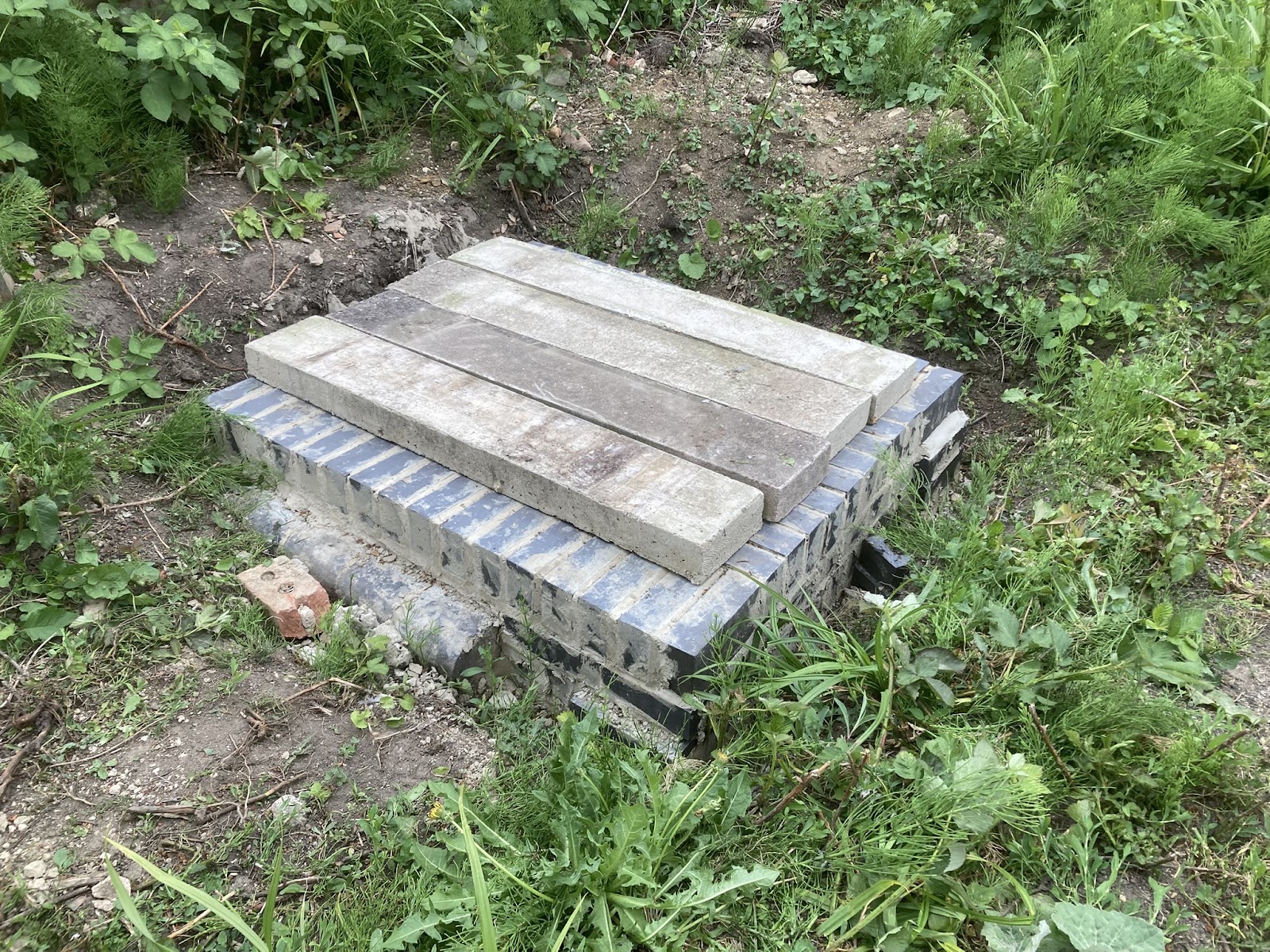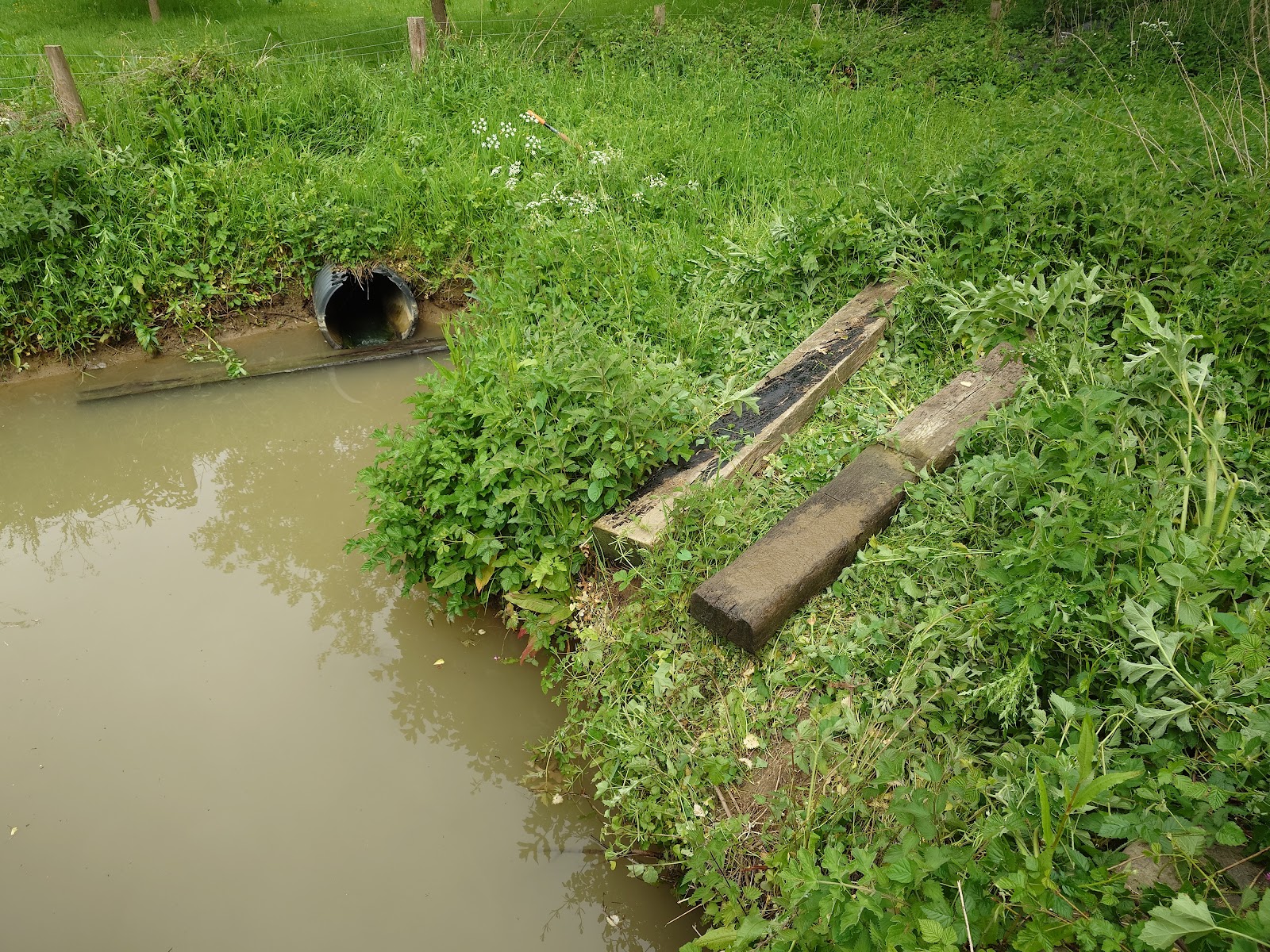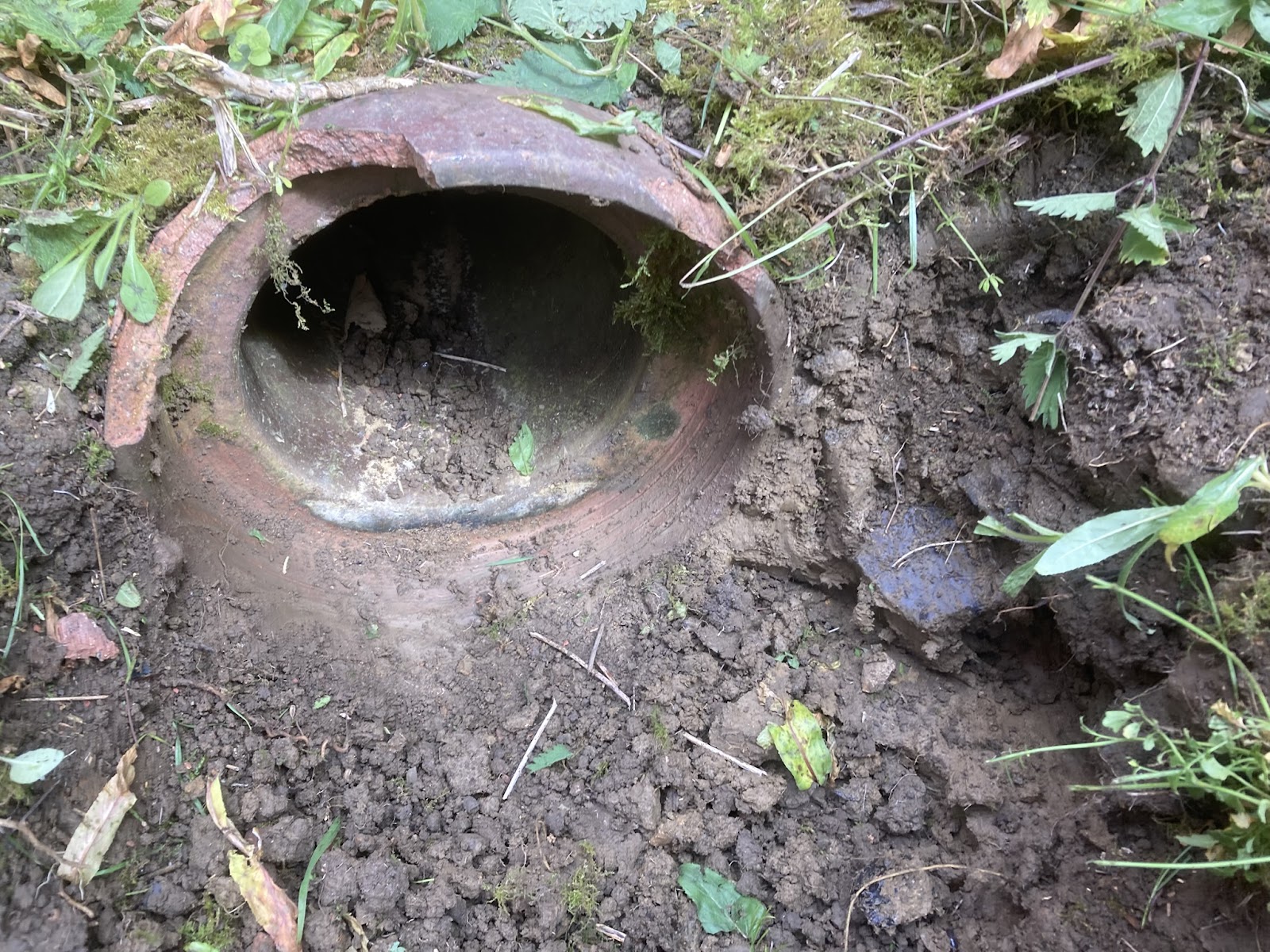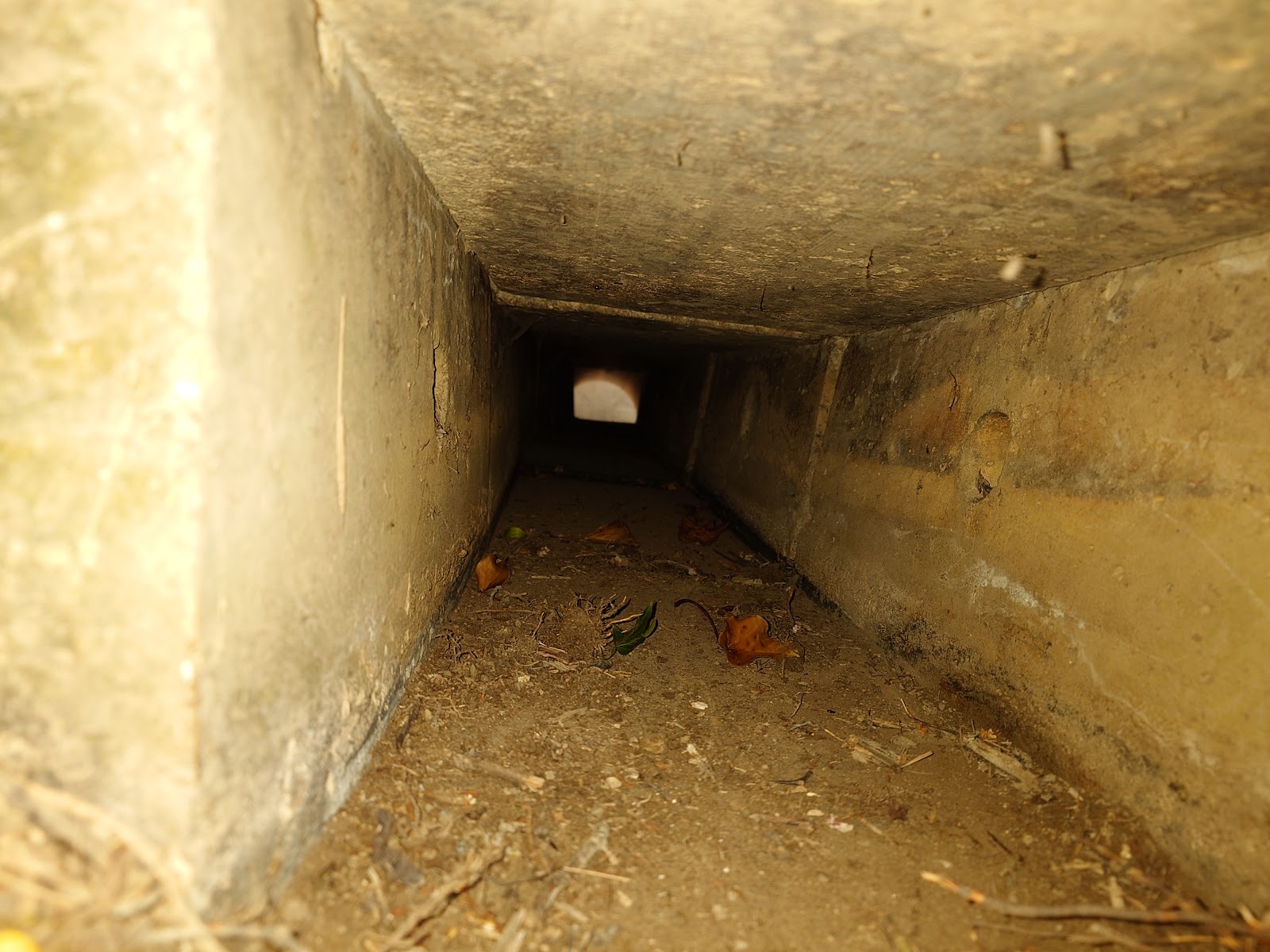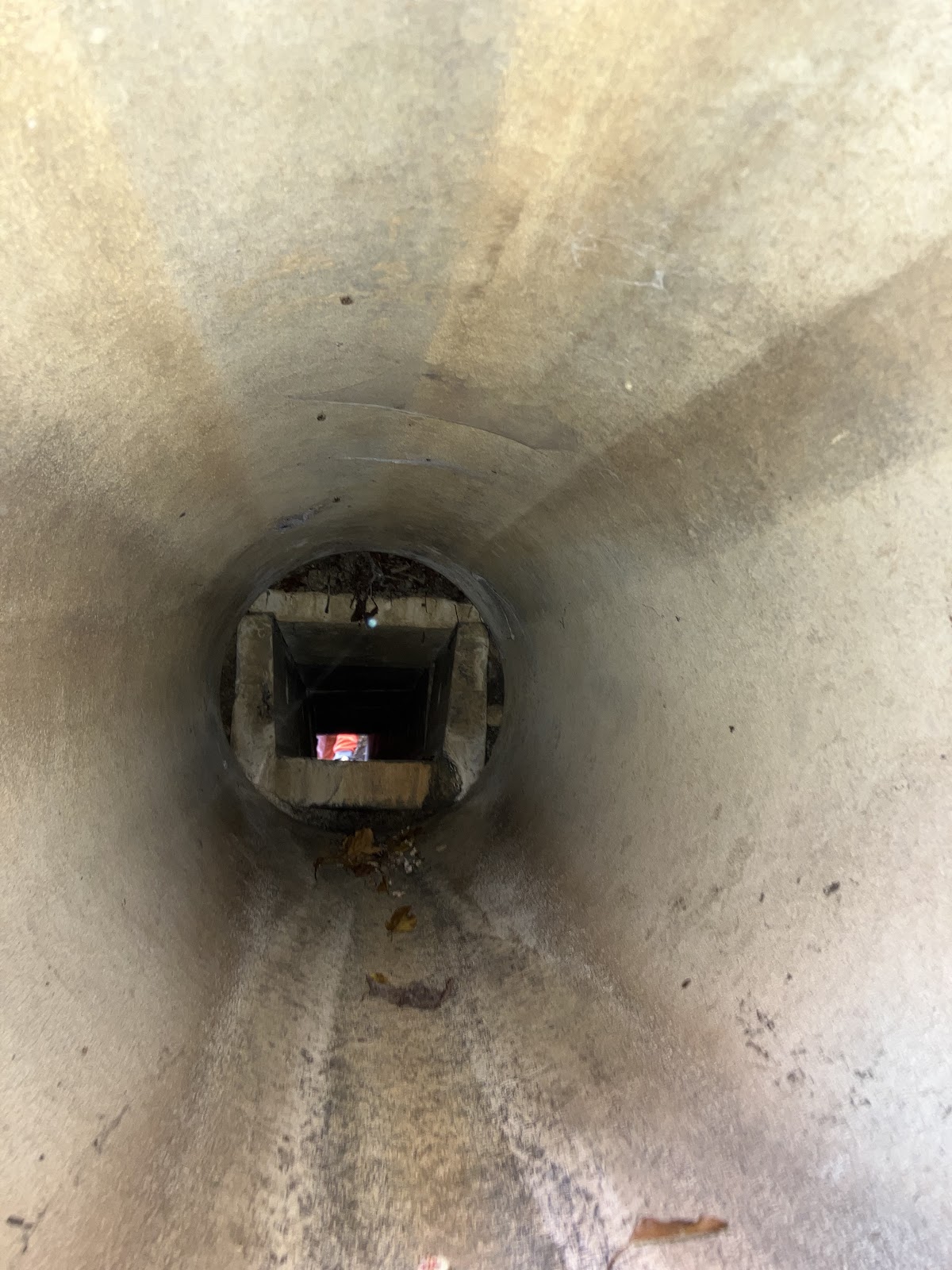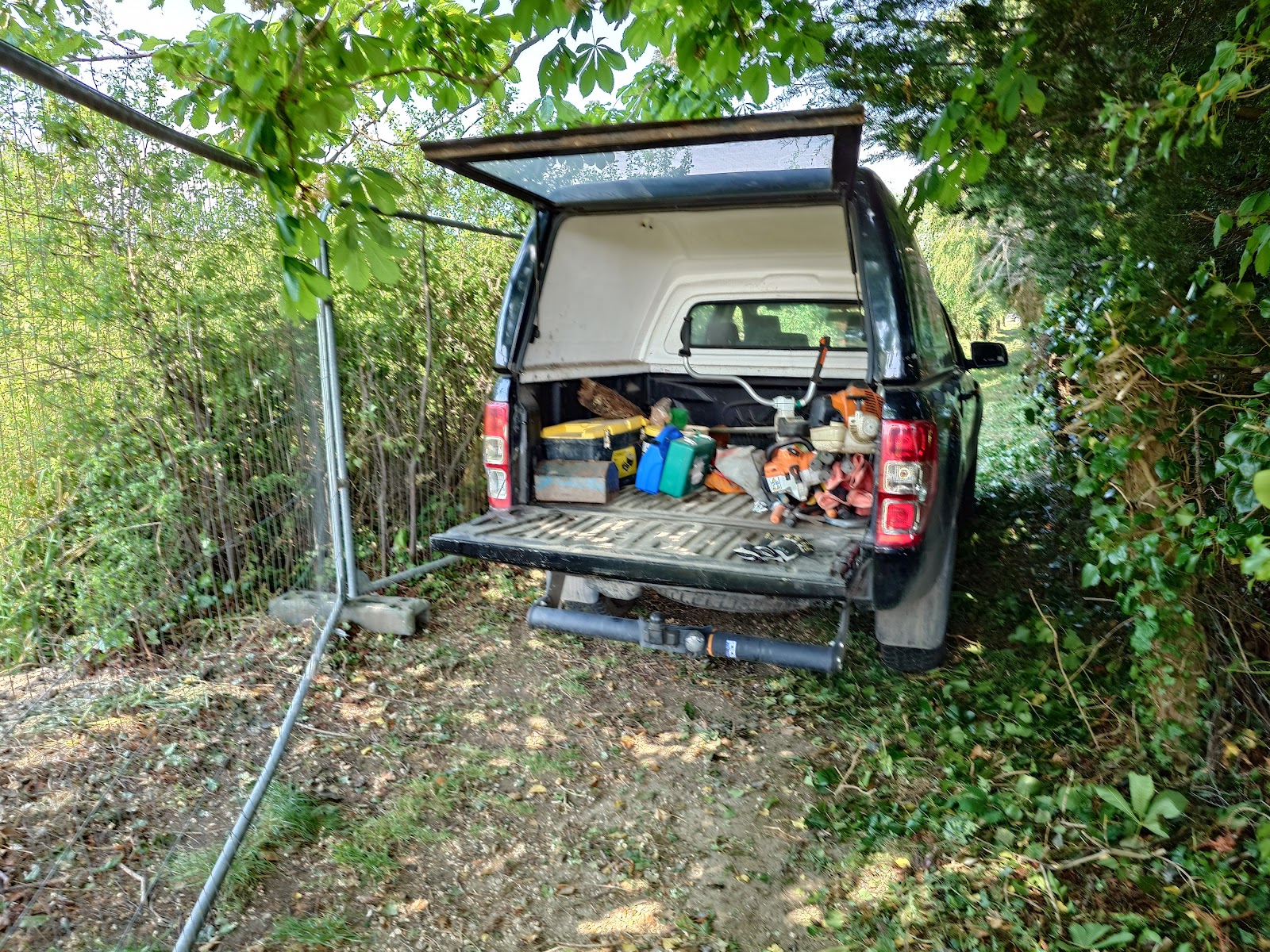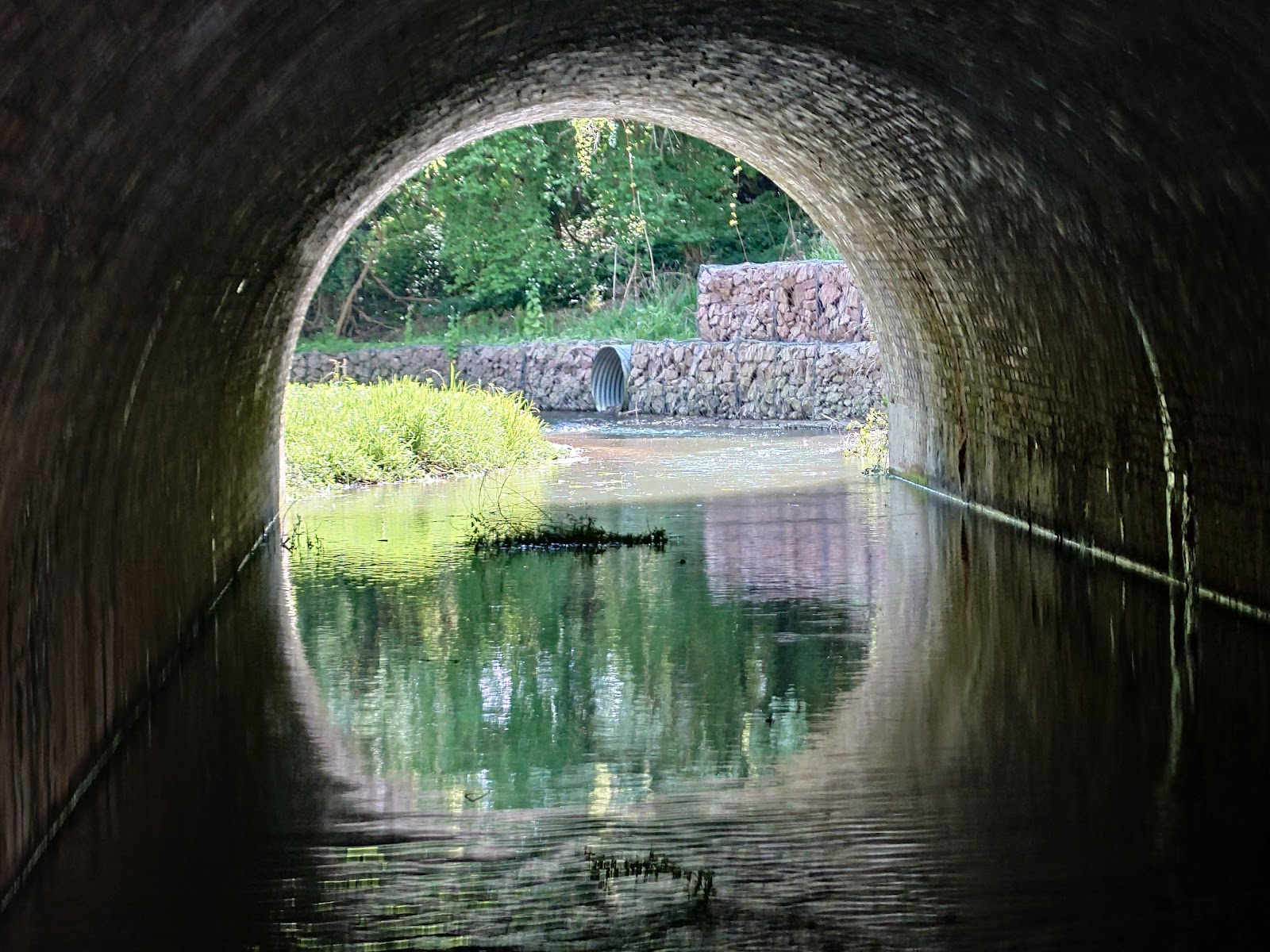Thursday 29th May
Warm, sunny and with a strong south westerly breeze, ideal conditions for drying washing outside – and also almost ideal conditions for working outside.
The target location for today’s team of eight was either side Little Buckland bridge.
The first tasks were placing some scour prevention rocks in the bed of the outlet streams of culverts 3B and 4A. Next, taking advantage of the continuing spell of dry weather; two of the team checked the outlet manhole of cross drain 3A, removing the last little bit of silt.
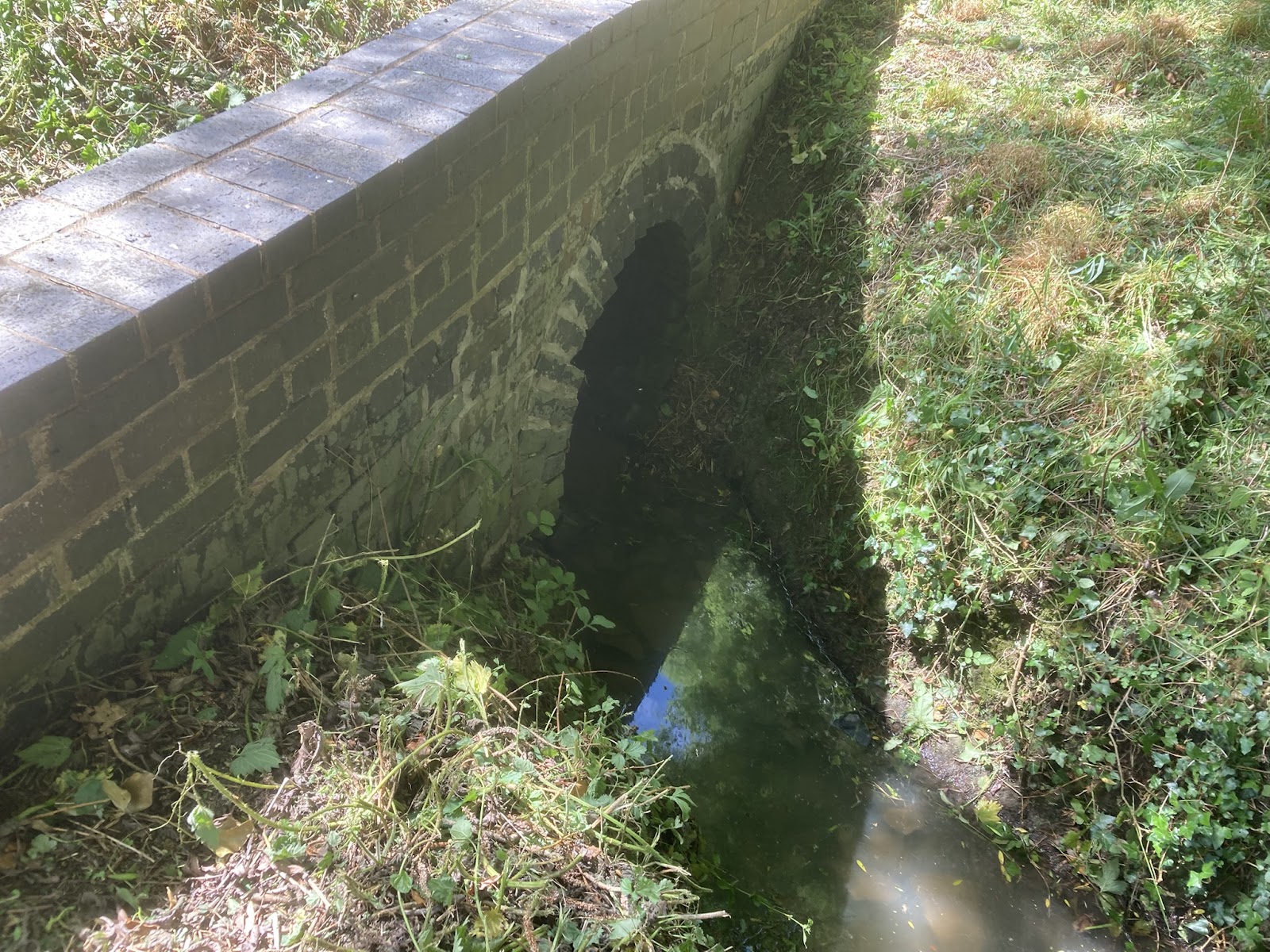 |
| 4A outlet - the stones we added in the bed are there (honest!). |
 |
| Still a small flow off the adjoining fields into the toe ditch/pipe and then into 4A inlet. [Photo by Jonathan] |
A ‘dry day’ task that we were not able to undertake was some minor repointing of the outlet headwall of culvert 3B. Whilst the water level was low; the amount of vegetation growing on the steep sides of the outlet channel prevented safe access. We will have to devise a safe way of clearing all of this before proceeding.
 |
| A deep and steep drop to the outlet of 3B. |
The main task for the day was in the toe ditch on the down (Cotswold) side on the low mileage side of culvert 4A. Two brush cutters and one hedge trimmer were put to action to clear access from the lineside and then along the length of the ditch. There are two chambers in this ditch on the low mileage side of the culvert, these are where run offs from the adjoining field enter. The ditch is piped between the second chamber and the inlet of 4B. One section of pipe was missing; so we repaired this with a length of plastic twinwall, neatly cut to fit into the existing pipe and the adjacent chamber. We also cleared out both chambers and the inlet of 4A. Most of the material from the chambers was badger bedding – not surprising as there is a large active badger sett in the side of the embankment. Worryingly there are also signs of badger excavations on the up (Malvern) side too.
 |
| The gap in the toe ditch pipe filled with a length of twinwall. |
 |
| One of the entrances to the badger sett on the down side. |
Continuing with our programme of installing safety markers for headwalls, we measured up the headwalls of 3A, 3B, 4A, 5A, 5B and 5C. 5C is over half way on to Laverton Meadow; so that was quite a long work. However, this did give us the chance to inspect all the drainage and fencing improvements made by our neighbour at Archer Farm. This will have sorted out the long standing problem of pooling water during the wet seasons in parts of the down side toe ditch.
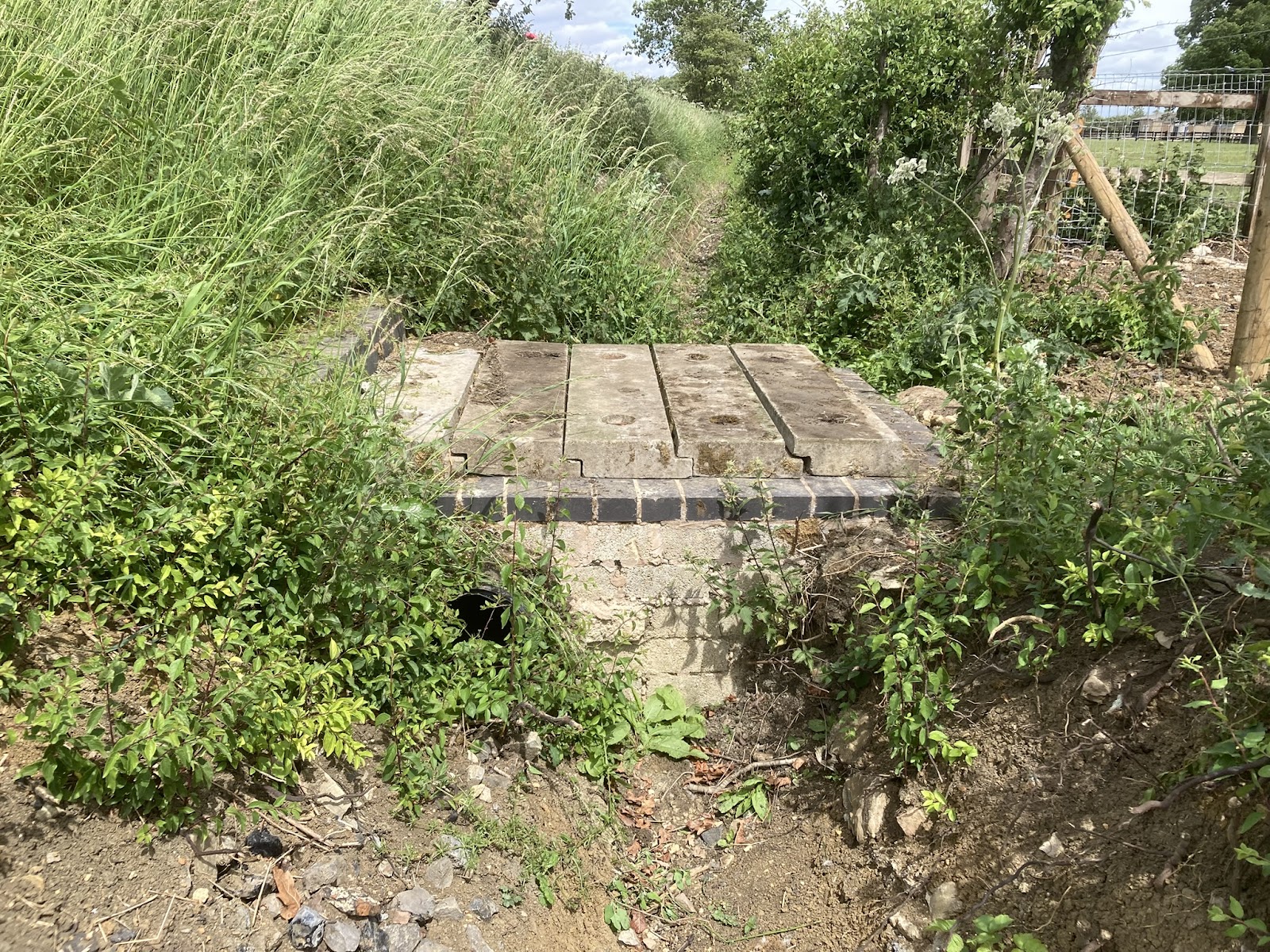 |
| Cross drain 5B inlet chamber in the down side toe ditch along side Archer Farm, reconfigured with a new overflow pipe from the farm's pond. |
 |
| What a difference - the reinstated toe ditch and sheep proof fence near 5B. [Photo by Jonathan] |
 |
| Almost the same spot back in October last year before work commenced. |
For the record the team today (in no particular order!) was Peter, Nigel, Roger, Polly, Dave, Martin, Andrew, Jonathan.
Wildlife report: The interesting observations were early in the day – we found both a frog and toad in the yard at Winchcombe whilst loading materials. Near Peasbrook we spotted more roe deer; and several rabbits. Plenty of insects of a multitude of species – including some ladybirds. Taking advantage of the abundance of flying inserts were several swifts.
Gala overtime
Like many GWSR volunteers, several members of the Drainage team also help out with other teams and departments. This is especially true with Special Events. For the 2025 Cotswold Festival of Steam (‘Spring Gala’) four of the team were assisting. Roger spent all three days manning the First Response Team's mobile unit; Jonathan was on crossing duty at Winchcombe; Andrew put in a turn as good train chaperone; and Ian helped prepare 76077 for display in the steam shed at Toddington.
 | ||||
| Riding a freight train south of Cheltenham Racecourse was an unusual opportunity to inspect the cess drains without a long walk from the station. |
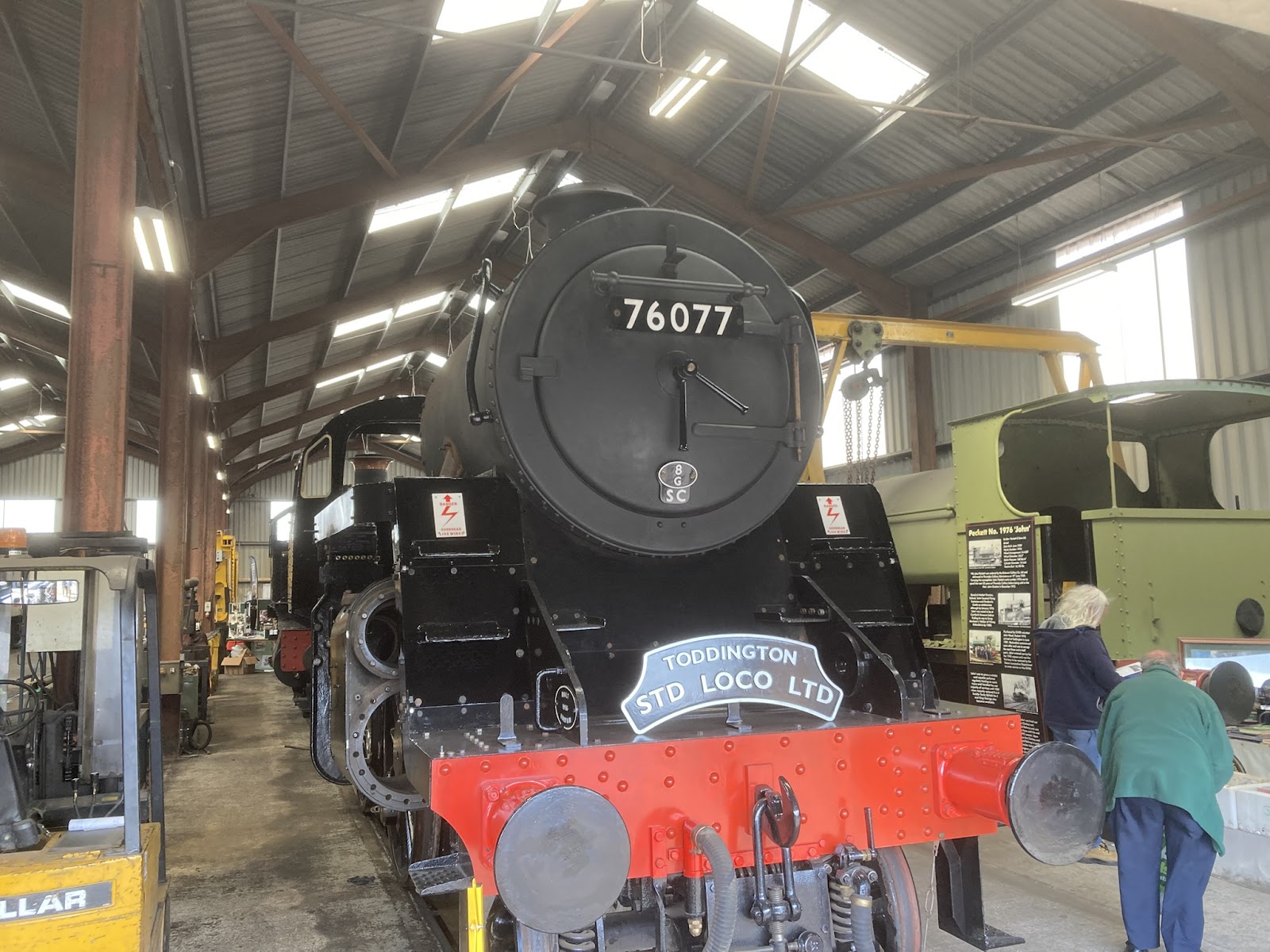 |
| Looking almost like a complete loco, 76077 in the steam shed at Toddington. |









